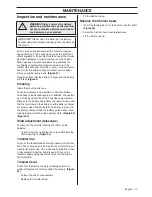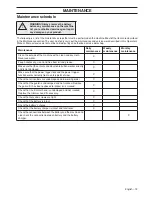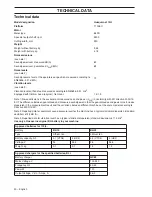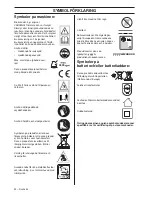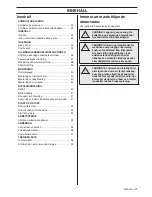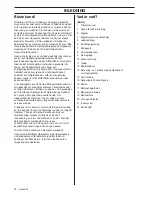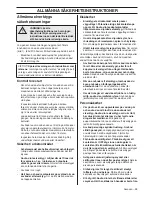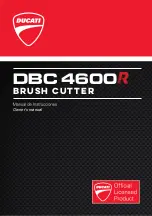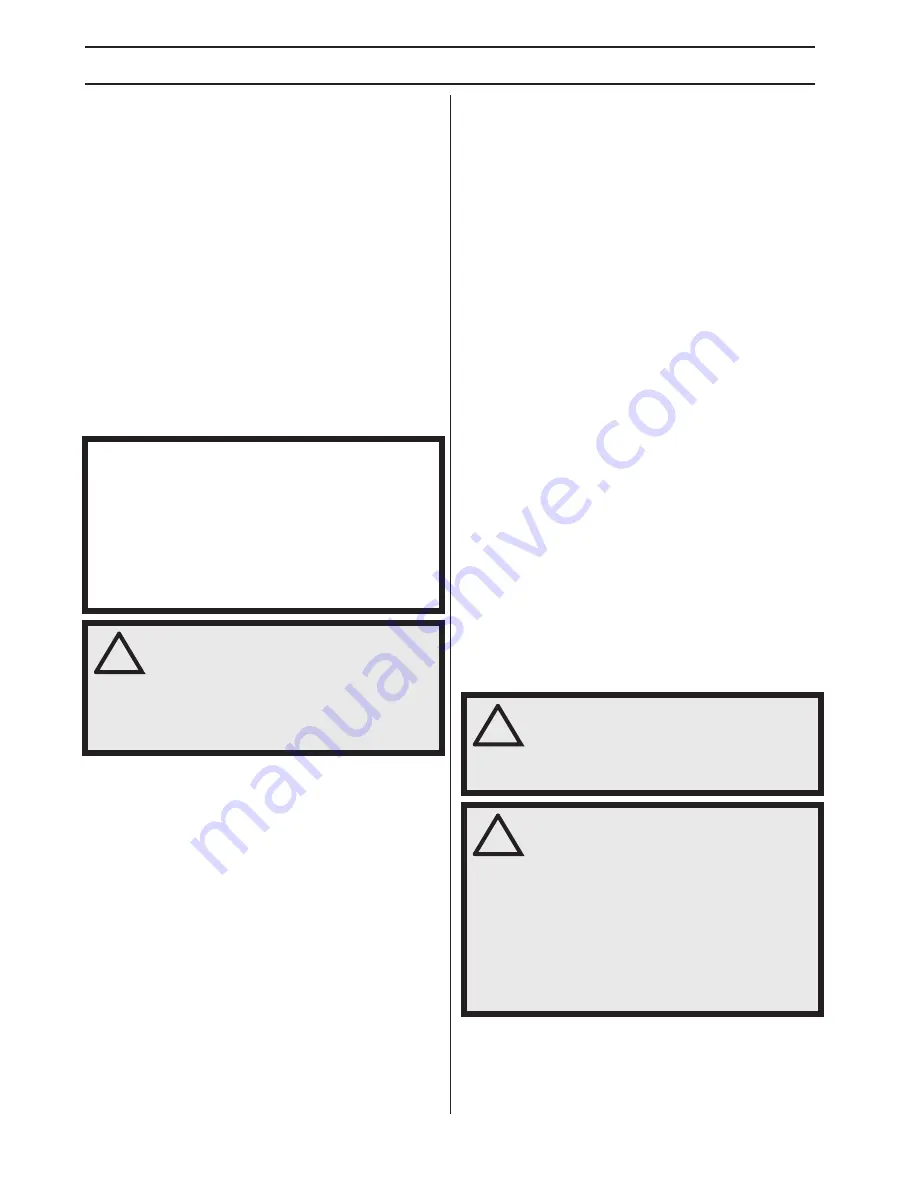
GENERAL SAFETY PRECAUTIONS
10 – English
•
Wear clothes made of a strong fabric and avoid loose
clothing that can catch on twigs and branches. Always
wear heavy, long pants. Do not wear jewellery, shorts
sandals or go barefoot. Secure hair so it is above
shoulder level.
•
Always have a first aid kit nearby.
Machine
′
s safety equipment
This section describes the machine
′
s safety equipment,
its purpose, and how checks and maintenance should be
carried out to ensure that it operates correctly. See the
”What is what?” section to locate where this equipment is
positioned on your machine.
The life span or the runtime of the machine can be
reduced and the risk of accidents can increase if machine
maintenance is not carried out correctly and if service
and/or repairs are not carried out professionally. If you
need further information please contact your nearest
service workshop.
Keypad
Make sure the machine is switched on or off when the
activate/deactivate button (1) is pressed and held (>1
sec.). The green LED (2) is lit or turned off.
Flashing warning indicator (3) and green LED (2) is lit
could indicate that:
(Figure 5)
•
it is not possible to apply full power and, at the same
time, activate the machine. Release the power trigger
and the machine is active.
•
the machine is blocked. Deactivate the machine.
Remove the battery from the machine. Remove the
grass or other material that is wrapped around the
trimmer head.
•
the machine is overloaded due to heavy trimming.
Release the power trigger and the machine is active.
If the warning symbol (3) flashes, it indicates that the
machine is too hot and the machine deactivates. When
the machine is restored to normal temperature it is again
ready to run and you can activate the machine.
Solid red warning light (3) indicates service.
Power trigger lockout
The power trigger lockout is designed to prevent
accidental operation of the power trigger. When you press
the lock (1) (i.e. when you grasp the handle) it releases
the power trigger (2). When you release the handle the
power trigger and the power trigger lockout both move
back to their original positions. This movement is
controlled by two independent return springs.
(Figure 6)
Make sure the power trigger is locked when the power
trigger lock is in its original position.
(Figure 7)
Press the power trigger and make sure it returns to its
original position when you release it.
(Figure 8)
Check that the power trigger and the power trigger lockout
move freely and that the return spring works properly.
(Figure 9)
See instructions under the heading Start. Start
the machine and apply full power. Release the power
trigger and check that the cutting attachment stops and
remain at a standstill.
Cutting attachment guard
This guard is intended to prevent loose objects from being
thrown towards the operator. The guard also protects the
operator from accidental contact with the cutting
attachment.
(Figure 10)
Check that the guard is undamaged and not cracked.
Replace the guard if it has been exposed to impact or is
cracked.
Always use the recommended guard for the cutting
attachment you are using. See chapter on Technical data.
IMPORTANT!
All servicing and repair work on the machine requires
special training. This is especially true of the machine
′
s
safety equipment. If your machine fails any of the
checks described below you must contact your service
agent. When you buy any of our products we guarantee
the availability of professional repairs and service. If the
retailer who sells your machine is not a servicing dealer,
ask him for the address of your nearest service agent.
!
WARNING! Never use a machine with
faulty safety equipment. The machine's
safety equipment must be checked and
maintained as described in this section.
If your machine fails any of these checks
contact your service agent to get it
repaired.
!
WARNING! Never use a cutting
attachment without an approved guard.
See the chapter on Technical data. If an
incorrect or faulty guard is fitted this can
cause serious personal injury.
!
WARNING! This machine is renowned for
its low vibration load. Overexposure to
vibration can lead to circulatory damage
or nerve damage in people who have
impaired circulation. Contact your doctor
if you experience symptoms of
overexposure to vibration. These
symptoms include numbness, loss of
feeling, tingling, pricking, pain, loss of
strength, changes in skin colour or
condition. These symptoms normally
appear in the fingers, hands or wrists.

















